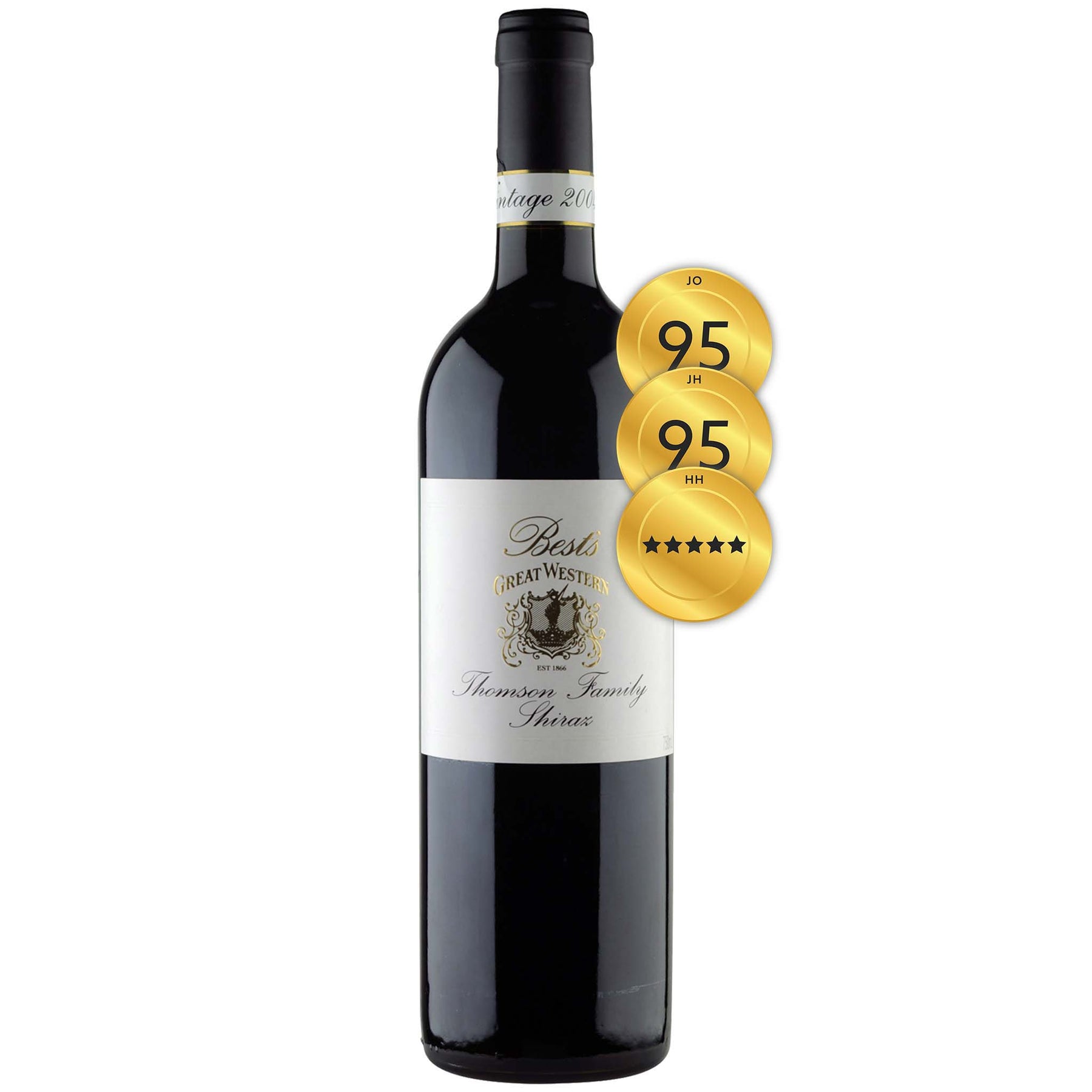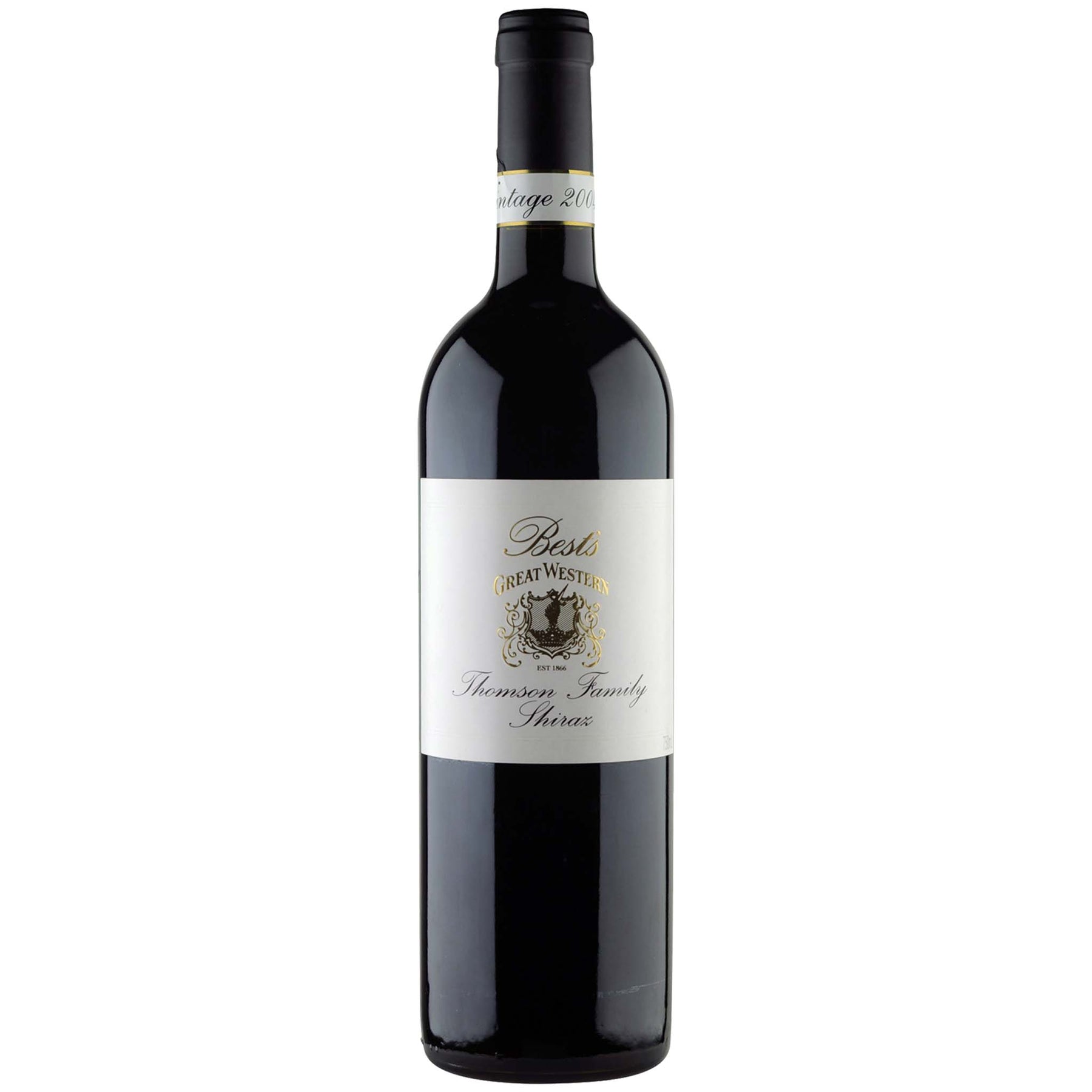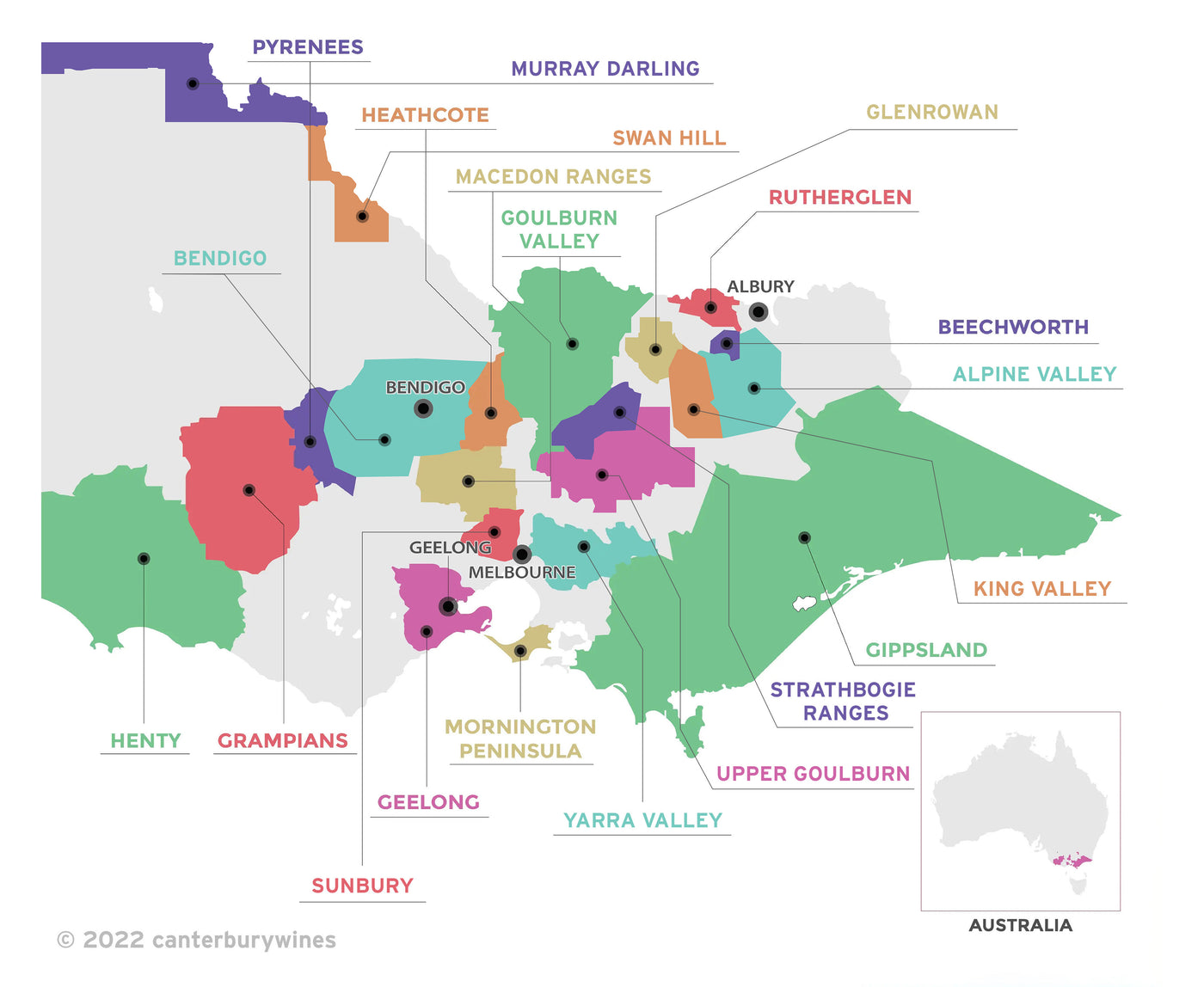

Best's Great Western Thomson Family Shiraz 2004
Style: Red Wine
Closure: Cork
Best's Great Western Thomson Family Shiraz 2004
Warehouse
34 Redland Drive
Vermont VIC 3133
Australia
Critic Score: 95 and ★★★★★
Alcohol: 14.5%
Size: 750 ml
Drink by: 2030
Best's Thompson Family Shiraz is one of the truly great wines of the world. The wine is made predominantly from fruit off fifteen rows of pre-phylloxera vines planted by Henry Best in the 1868. These rows that comprise the Thomson Family block are the oldest Shiraz vines in the historic Concongella Vineyard. Today the shiraz clone is referred to by the CSIRO as the Concongella clone or the Best's Old Block clone and it is the mother clone of all subsequent shiraz plantings at Best's Great Western.
Best's Thompson Family Shiraz is also one of the rarest with production being miniscule. In addition, it is only released in exceptional vintages. Sadly the ancient vines are slowly dying off, so the production slowly decreases with time. Some younger material from mature vines in the Concongella Vineyard (grown by cuttings taken from the old block) are included in the wine. That the wine is not 'stretched' with younger material is self-evident given the number of years it is not made at all, and that 2200 bottles were made in 2014, compared with (for example) 4200 in 2010. However, there will come a time when the wine will be no more.
"All it needs is time, as the line's pedigree shows. The flavours in the mouth are powerful and lingering but also somewhat tight and unresolved. Put it away in a cool cellar to mature." Huon Hooke
Jeremy Oliver allocates the highest possible ranking of 1 to only three Australian shiraz - Penfolds Grange, Henschke Hill of Grace and Best's Thomson Family. Of the Thomson Family he says: "Sourced from some of Australia's oldest shiraz vines, this wine is about intensity and purity of dark, spicy fruit, style, elegance and a wonderfully tight-knit and fine-grained backbone."
Expert reviews
"A rich, powerful and assertive shiraz whose fruit profile just manages to stay within the bounds of genuine ripeness. Deep, dark and spicy, its meaty, leathery and slightly briary aromas of intense red and black berry fruits are backed by dusty clove and vanilla-like oak. The palate backs a substantial weight of slightly angular and brambly fruit with a firm and palate-coating extract of drying tannin. Finishing with nutty, savoury qualities, it's long and persistent, if at present slightly raw and awkward. An unashamed cellar style, it will take some time to reach its ultimate balance and integration. Drink 2024-2034." Jeremy Oliver - 95 points
"More concentration of power and greater structure than Bin 0; blackberry with splashes of licorice and spice; will be seriously long-lived, and is not yet showing its best." James Halliday, Halliday Wine Companion - 95 points
"Best's Thomson Family is a red built with the cellar firmly in mind. It is too young to drink right now: it's lean and a trifle austere, with some astringency and an apparent lack of mid-palate fruit. All it needs is time, as the line's pedigree shows. Mint, rasberry and vanilla aromas vie for your attention, while the flavours in the mouth are powerful and lingering but also somewhat tight and unresolved. Put it away in a cool cellar to mature, so as to be sure to get your money's worth. Best drinking: 2010-2025+" Huon Hooke, Gourmet Traveller Wine ★★★★★
Thomson family block

The dry-grown vines of the historic Thomson Family block comprise fifteen rows of pre-phylloxera vines in the Concongella Vineyard that were planted by Henry Best in 1868. In great vintages, all the fruit goes into the Thomson Family Shiraz. If the fruit doesn't make the grade, it is used selectively in Bin 0.
In the old days, the Thomson Family block were known as two separate sections: one was known as "11 rows” and the other as "four rows” (also called the "pigsty vineyard” due to the fact that the pigsty used to be beside the vineyard). The vines are picked separately to keep the rows apart. A lot of time has been spent mulching heavily around the vines with straw to help retain moisture and encourage healthy bug activity, and they're now looking fantastic.
These gnarled old vines in the oldest Shiraz vineyard grow in soils that range from hard-setting silt over clay to friable clay loams. The dry-grown have roots that penetrate several metres down deep into the earth, bringing extra complexity and intensity to the wines.
About the winery

The story
The story of Best's begins in 1866 when Henry Best purchases 30ha of land in the small town of Great Western. It was a property named Concongella. Henry planted the first vines in 1868. Best's original vineyards are among the oldest and rarest pre-phylloxera plantings in the world. The Nursery Block contains 39 varieties that are thought to be sourced from the Busby collection, Australia's first vines. A number of the vines planted in the Nursery Block have defied identification and are thought to exist nowhere else in the world.
In the early 20th century, Henry Best presents his wines throughout Europe and was awarded gold medals in Paris, Bordeaux, Brussels and London. Henry Best dies In 1913, age 81, and is buried in the Great Western Cemetery.
In 1920 the Thompson Family purchases the Concongella Vineyard from the Best family. The Thompson Family had originally settled in Great Western in 1893 and purchased a winery at Rhymney (13km south of Henry Best).
In 1961 Viv Thomson joins his family for his first vintage. In 1967 Best's Old Vine Pinot Meunier was first produced. In 1975 Viv decided to appoint the first external winemaker, Trevor Mast. Best's had grown significantly and Viv was needed to manage the company and develop relationships further afield.
The 1992 vintage of the flagship Thomson Family Shiraz is first released in 1993 to commemorate 100 years since the Thomson family settled in Great Western. In 2000 Best's cornerstone wine, Bin No. 1 Shiraz, is made for the first time.
In 2008 Viv Thomson hands over the reins of the company to his son Ben. In 2020 the Thomson Family celebrates 100 years as custodians of Best's Wines.
Notable Awards
2011 Best's Bin 1 Shiraz wins the Jimmy Watson Memorial Trophy at the 2012 Royal Melbourne Wine Show.
2014 Best's Thomson Family Shiraz wins the 2017 Halliday Wine of the Year.
Langton's classifies Best's Thomson Family Shiraz as 'Exceptional' and Best's Bin 0 Shiraz as 'Outstanding' in 2018
Best's awarded Best Value Winery of the Year in James Halliday's 2021 Wine Companion.
2021 Foudre Ferment Riesling wins the 2023 Halliday Wine of the Year.

Victoria
Victoria is home to more than 800 wineries across 21 wine regions. The regions are Alpine Valley, Beechworth, Bendigo, Geelong, Gippsland, Glenrowan, Goulburn Valley, Grampians, Heathcote, Henty, King Valley, Macedon Ranges, Mornington Peninsula, Murray Darling, Pyrenees, Rutherglen, Strathbogie Ranges, Sunbury, Swan Hill, Upper Goulburn and Yarra Valley.
Victoria's first vines were planted at Yering in the Yarra Valley in 1838. By 1868 over 3,000 acres had been planted in Victoria, establishing Victoria as the premier wine State of the day. Today, the original vineyards planted at Best's Wines are among the oldest and rarest pre-phylloxera plantings in the world.
Victoria's climate varies from hot and dry in the north to cool in the south and each wine region specialises in different varietals. For example, Rutherglen in the north is famous for its opulent Muscats and Topaque and bold reds, while the many cooler climate regions near Melbourne produce world class Chardonnay and pinot Noir. Victoria is truly a wine lover's playground.

